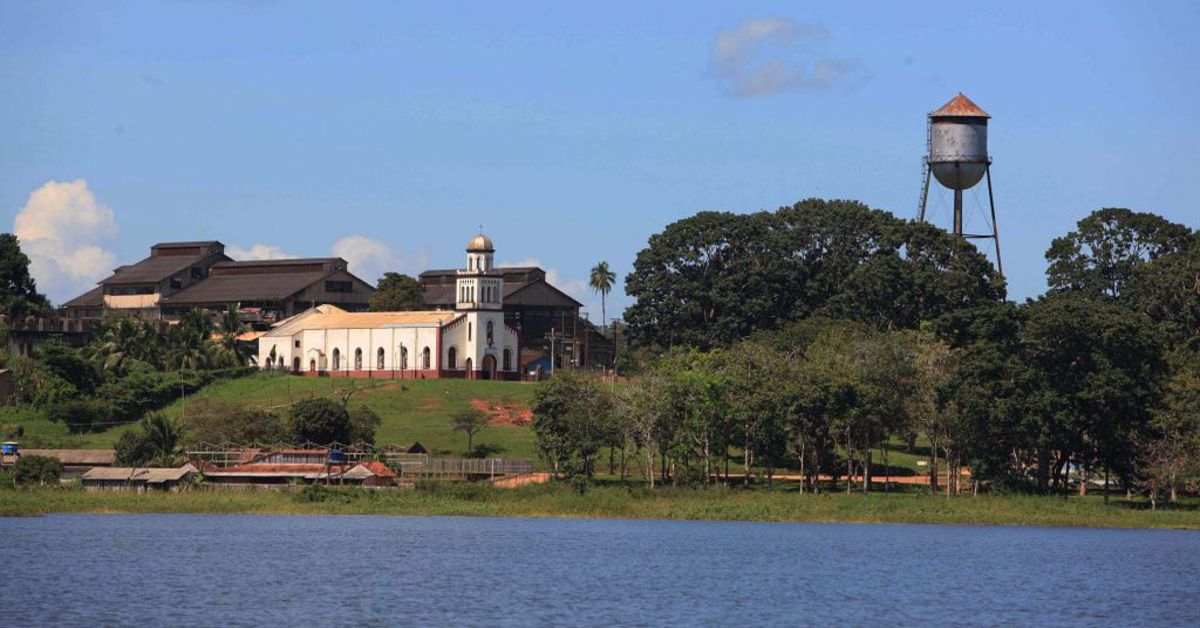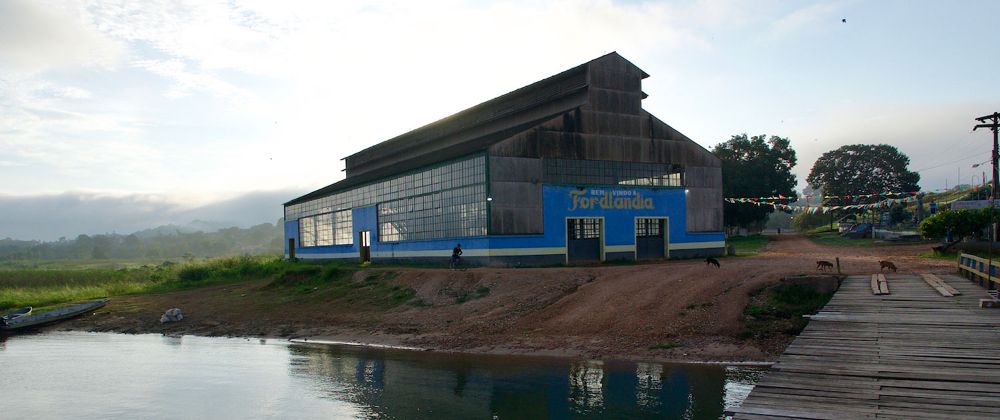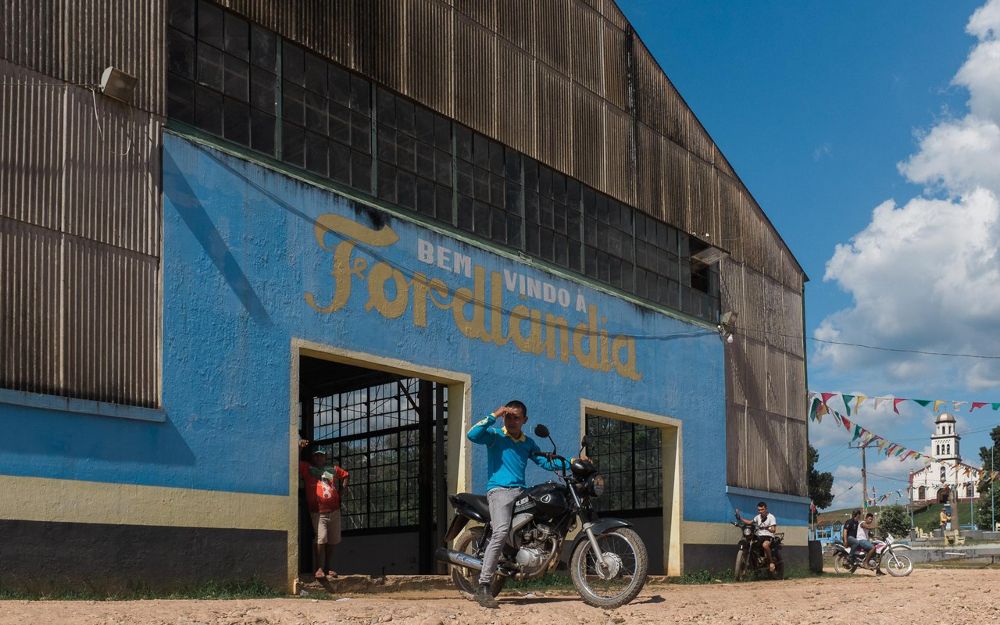At the top of his game, by the 1920s Henry Ford had built an industrial empire based on his mass production of the motor car. So why on earth would he want to create a Motown in the middle of the Amazon forest?
The story of Fordlandia, one of the world’s strangest lost cities and the site of Henry Ford’s failed utopian experiment, began in 1927 when the industrialist came up with the idea of building a factory town attached to its own rubber plantation on the east banks of the Tapajós river roughly 190 miles south of the city of Santarém in Brazil.
This coincided with the launch of the Model A that was expected to propel vehicle sales to record levels. So, against the backdrop of booming business and a healthy bank balance, Ford planned to set up a self-contained manufacturing facility to produce two million tires per year, sourcing the raw material directly from the adjacent wild rubber tree plantations.
There was one problem, however, labor. These wild plantations were deep in the Amazon forest, miles from cities or towns that could provide the workforce to harvest and convert the raw rubber. Ford’s solution was to create Fordlandia, a city based on the values that made the Ford Motor Company a success – while, of course, producing cheap rubber.
The Real Reason Ford Created Fordlandia In The Middle Of The Amazon Jungle
While ostensibly he sought to elude the British monopoly over the supply of rubber used for producing tires and other car parts, Ford surprised the largely conservative business community by declaring that the company was not going to South America to make money but to help develop the region.
Father of the integrated assembly line and founder of the largest factory on earth, the Rouge plant in Dearborn, Ford had ambitious plans to create a modern American city in the Amazon Rain Forest. Although he needed rubber to produce tires to sustain the company’s growth, he had a vision of developing the jungle people of the region into “fully realized men,” as author Greg Grandin put it in his book on Fordlandia.
Thus, with a signed agreement, which saw the American industrialist pay $125,000 for about 3,900 square miles of land called "Boa Vista," the Companhia Ford Industrial do Brasil started construction of the town in 1926. Looking to employ workers, several offices were opened in the cities of Belém and Manaus, and, with the promise of good wages, citizens began to stream into Fordlandia.
True to his promise to uplift the region the site was developed as a planned community from the outset. Typical American houses were built, as were a hospital, school, library, sawmill, and a power-generation utility to deliver electricity to the entire town.
Created in the image of a typical American town, the community also had a swimming pool, playground, dining halls, a church, a recreation center, a theater to screen Hollywood movies, and a golf course. In short, Fordlandia was in many ways uplifting the people of the region.
Why then, in 1934 did the Ford Motor Company relocate the project to Belterra, 25 miles south of the city of Santarém?
The Reason Ford’s Motown In The Middle Of The Amazon Rain Forest Failed
As a business venture Fordlandia was plagued by problems almost from the beginning. Without roads the area was only accessible by the Tapajós River, severely hindering logistics.
The terrain was hilly, rocky, and infertile. What’s more, Ford's managers had no knowledge of tropical agriculture, resulting in unforeseen disruption to the process.
In the wild, the rubber trees grow apart from each other as a protection mechanism against plagues and diseases. In Fordlandia, however, the trees were planted close together in plantations, easy prey for tree blight, Sauva ants, red spiders, and leaf caterpillars.
Moreover, in lower temperatures, the rubber is concentrated in the lower areas of the tree, but as the temperature rises during the day the latex spreads throughout the tree, making the tapping more difficult. As a result, the typical journey of a rubber tapper began at around 5 am and ended at noon.
Adding to the workers’ woes, the plantation was divided into areas and each worker was assigned to a different area to prevent workers from tapping the same trees successively.
As the work pressure grew so did discontent. Not all of Fordlandia’s residents were happy about being Americanized, and within a few years, Ford’s Brazilian Motown was in crisis. Riots by factions of rival workers and revolts among laborers forced frequent work stoppages.
Even within the town, Ford’s utopia was crumbling. With Ford banning alcohol, tobacco, women, and even soccer, locals created a rival town up the river, which they called the Island of Innocence, offering every vice forbidden in Fordlandia.
In 1930, the situation became untenable when workers grew tired of the American food and revolted in the town's cafeteria in what was to become known as the Breaking Pans Revolt. Although an uneasy truce was eventually ironed out, Fordlandia's days were numbered.
However, the town’s fate wouldn’t be decided by cultural differences or even the local business challenges. By the end of the Second World War, synthetic rubber had been developed, drastically reducing the world’s reliance on natural rubber.
This single event ruined Ford’s utopian vision overnight. Without producing any rubber for Ford's tires, the second town was also abandoned, and in 1945 Henry Ford's grandson, Henry Ford II, sold both towns back to the Brazilian government for a loss of over $20 million.
Forgotten by history, Henry Ford’s failed utopian experiment supported fewer than 90 inhabitants for decades. However, that all changed when people, desperate for a place to stay, moved into the derelict precinct. Fordlandia, now a district of Aveiro, had grown to nearly 3,000 people by 2017.



